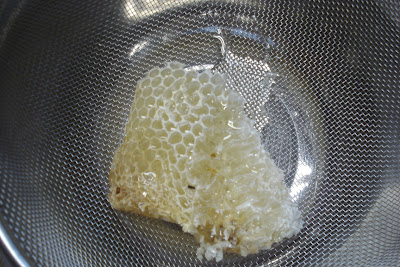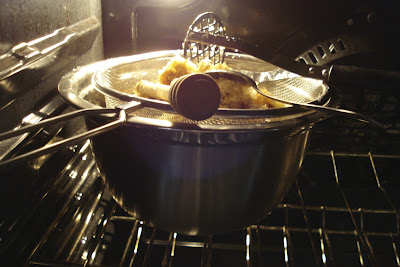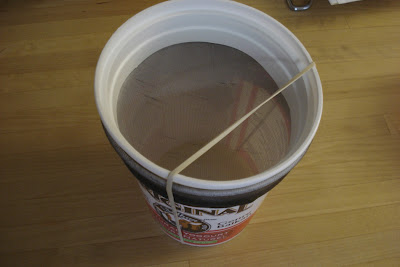It is about time to have an update on our beekeeping adventure. Yes, the bees have been busy and, as far as we can see, happy. Strangely the stronger hive, with more bees at first, is now the weaker hive with less bees. We are wondering if they swarmed right at the beginning. But since we do not know, we just wonder.
We are trying to keep the bees as naturally as possible, so our frames do not have plastic foundations. The bees are doing a great job building their own comb. Just here and there they are a bit off. So we harvested these off combs filled with honey, making it our first own honey. The smell and taste is just amazing.
Since we do not have any special equipment, we simply used the Honey Harvest – Crush and Strain method, simplified even more with things we had on hand.
We crushed the comb and strained the honey first overnight in an oven with the light on. Our summers are not really hot, so we needed a bit of warmth from the oven light bulb to keep the honey liquid. Then we filtered it through a DIY strainer. My husband came up with this unique idea: it is simply the top part of a yoghurt cup put into a whole one with a nylon sock in between. An elastic is holding it together.
Eh, it worked :). We got about two pounds of delicious honey.
The bees produced some more honey. So we did some research and came up with a DIY strainer from home and hardware. It is made out of two H&H pails. One with drilled holes placed into the other one with out holes, and a 5 Gal Nylon Paint Strainer.
The advantage of using the Crush and Strain method is the fact that there is absolutely no heat involved. The honey just flows out naturally and all enzymes are preserved. It is also a very inexpensive solution that works very well.
Natural, not heated, not treated honey is very delicious and healthy. We are so thankful for the honey!







Leave a Reply